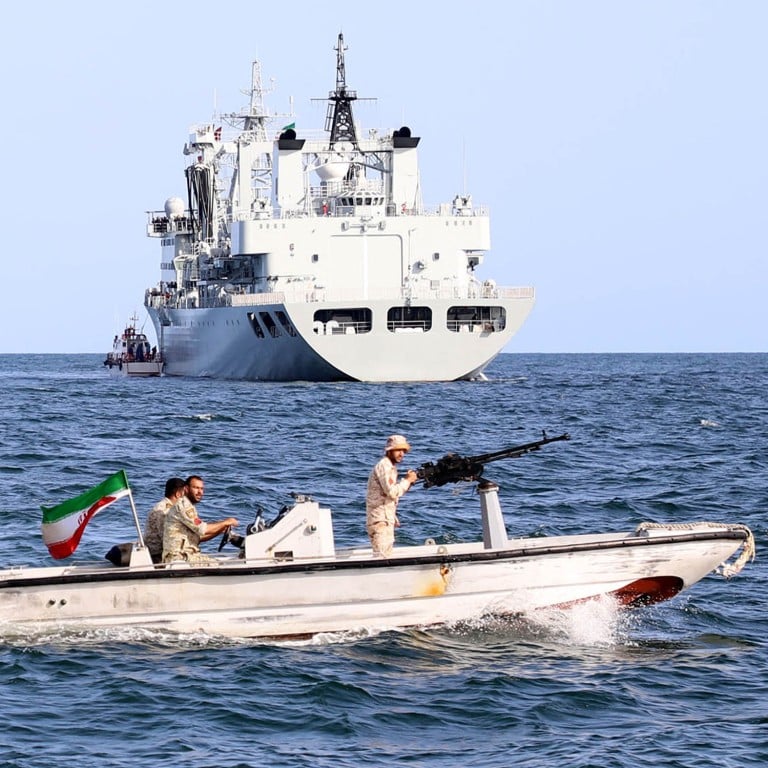
China, Russia and Iran stage navy anti-piracy drills as Red Sea attacks escalate
- Joint exercises in Gulf of Oman focus on rescuing hijacked merchant ships and feature Chinese and Iranian special ops teams and PLA destroyer
- Observer says emphasis on piracy is ‘clever bit of marketing’ for military cooperation between ‘international pariahs’ Tehran and Moscow
The PLA Daily reported on Thursday that the three countries were holding the joint drill, named “Maritime Security Belt – 2024”, from March 11 to 15 in the Gulf of Oman in the Indian Ocean, near Chabahar port in southern Iran.
The five-day joint exercise included training on firing at sea and rescue operations for hijacked merchant ships.
On Wednesday, the joint exercises focused on anti-piracy operations. Warships from the three countries formed two task forces and manoeuvred towards the two merchant ships, represented by Iranian vessels.
China, Russia and Iran hold military exercise as Red Sea attacks rise
The anti-piracy drill involved special operations teams from China and Iran, who covertly boarded a hijacked ship to subdue the pirates and search the cabins to rescue hostages.
The guided-missile frigate Linyi and the comprehensive supply ship Dongpinghu also took part in the drill.
The Chinese defence ministry said the drill aimed to “jointly maintain regional maritime security”.
The joint exercise comes amid growing confrontations in the Red Sea after a US-led coalition launched counterstrikes against Yemen’s Iran-aligned Houthi militants, who have attacked international and commercial shipping in support of Palestinians in the Gaza war.
On Thursday, Russian news agency Sputnik reported that the Houthis claimed they had “successfully” carried out a test flight of a hypersonic missile with high destructive capability and were “preparing to add these missiles to its military arsenal”, though the report did not provide any evidence to support the claim.
Russia’s reliance on China, others has ‘potential to undermine’: top US official
China, Russia and Iran conducted a similar drill in March last year.
Benjamin Barton, associate professor at the University of Nottingham’s Malaysia campus, said closer trilateral cooperation through repeated military drills suggested the exercises were “becoming part of a growing cycle of sustained maritime interaction between the three countries”.
Barton said the drills were a way of building closer ties between countries that were often considered “international pariahs” and “spoilers” – namely Russia and Iran.
“Another reason for the drill is to demonstrate a presence in waters that have become something of a new battleground ever since the Houthi rebels began indiscriminately targeting commercial vessels navigating up or down the Suez Canal.”
He added there was also a technical element to the drills as they aimed to “fine-tune operationalisation at sea” in case one or more of the countries needed to deploy ships to the region.
“The inclusion of anti-piracy in my books is simply a mechanism to deflect attention and negative press away from the drill. After all, the fight against piracy was almost universally legitimised by the international community,” Barton said.
“Therefore it raises few eyebrows … So labelling the drill under the auspices of an anti-piracy exercise is a clever piece of marketing to distil the noise this exercise is likely to generate at this time.”

